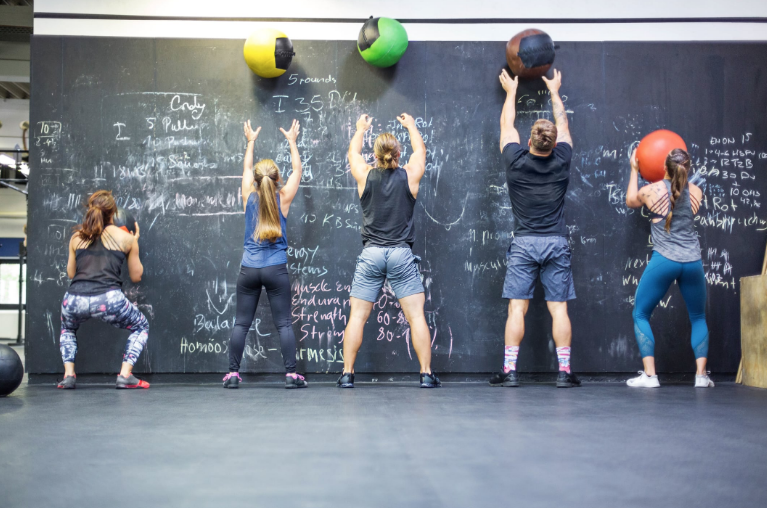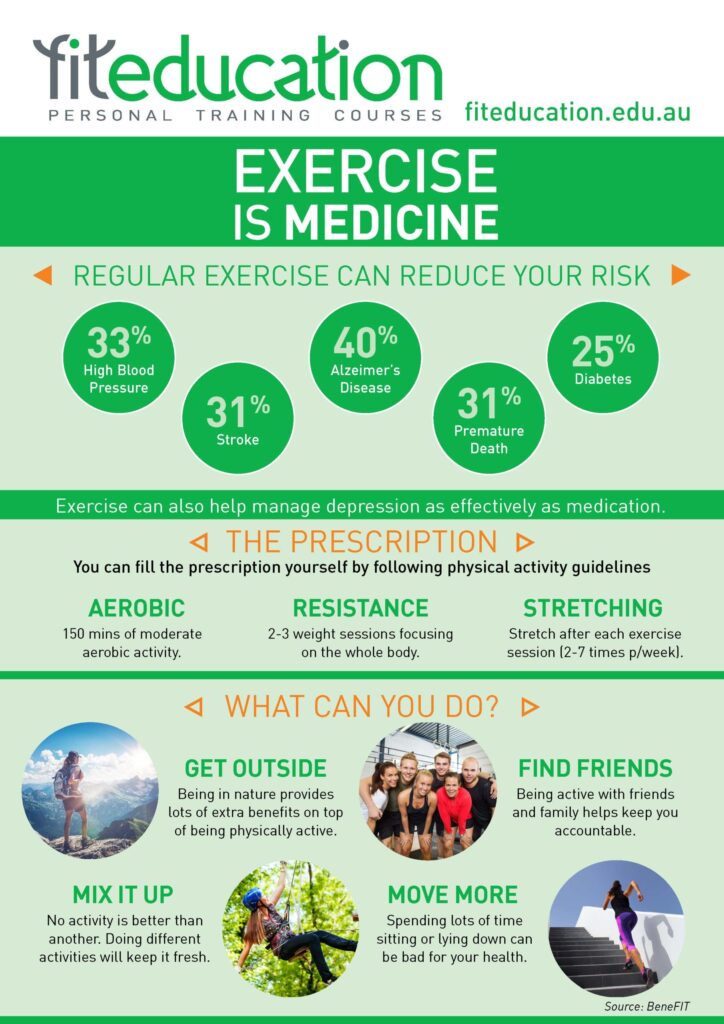Exercise is essential for the wellbeing and physical health of all humans in conjunction with a proper diet. It is time fitness was considered as an essential service by the authorities as well. Gyms have been one of the first businesses shut down during COVID restrictions, (due to the heightened fears of infection transmission at fitness clubs). Essential service are not closed down.

The impact of the Sport, Fitness and Recreation industry extends beyond economic benefits, with the industry and its sub-sectors providing significant value and contribution to Australian society through preventative health, mental health benefits, increased productivity, decreased worker absenteeism, decreased compensation claims and injuries. This is recognised through significant investment by federal and state governments in a range of sport and physical activity initiatives.

The Physical Benefits of Exercise:
The physical benefits of exercise are well documented and include:
Bones:
Bone cells respond to activity and movement. The more bones are used, the more they are rebuilt and maintained. If bones are not used, atrophy (degradation) sets in (like any other tissue). If a large force is regularly applied to a bone, the area of the bone supporting the load needs to be large enough to dissipate the forces and prevent damage. An increase or decrease in muscle strength or mass through training or periods of reduced activity will result in a corresponding increase or decrease in bone.
Tendons and Ligaments:
Resistance training can increase the size and strength of tendons and ligaments, as well as the junctions between the tendon / ligament and bone.
Cardio Respiratory System:
The respiratory muscles respond to overload in a manner similar to that of other muscles, so their endurance and strength improve in response to training. This increases the rate at which oxygen can diffuse into the muscle tissue from the blood. Specifically:
- Increased number of alveoli
- Increased strength of intercostal muscles
- Increase vital capacity
- Increased strength of diaphragm
- Increased stroke volume
- Increased max cardiac output
- Increase in capillarization
- Increase in red blood cells
- Cardiac hypertrophy
- Lower resting heart rate
Muscles:
Weight training can bring about many changes in muscle structure and function including:
- Increased metabolic buffering capacity
- Increased force and power output
- Muscle fibre hypertrophy
- Improved movement efficiency
- Increased capacity to use fat for energy
- Increased cross-sectional area of fibers
- Attenuated stress hormone responses that deplete glycogen
- Enhanced immediate ATP and phosphagen energy delivery systems
- Enhanced short-term glycolytic energy delivery systems
Hormones (Endocrine System):
Exercise affects the endocrine system positively.
Nervous System
Neural adaptations to strength training include increased effectiveness of neural recruitment and excitability. There is also an increase in firing rates and central nervous system activation. Neural adaptation is particularly important for exercise in the elderly.
Energy Systems
Alactic System:
- Increased creatine phosphate stores.
- Elevated alactic enzyme activity.
- Muscle fibre (especially fast twitch) hypertrophy.
- Neural adaptations.
- Cardiac hypertrophy (increased ventricular thickness).
Lactic System:
- Increased intramuscular and liver glycogen stores.
- Raised anaerobic enzyme activity.
- Increased lactic acid tolerance.
- Aerobic System:
- Heart size and volume increases.
- Blood volume and total haemoglobin increases.
- Stroke volume-rest and exercise increases.
- Cardio output-maximum increases.
- VO2 Max increases.
- Oxygen extraction from blood increases.
- Lung Volume increases.
- Resting heart rate decreases.
- Submaximal exercise heart rate decreases.
- Blood pressure (if high) decreases.
Musculoskeletal System:
- Mitochondria-number and size increase.
- Myoglobin stores increase.
- Triglyceride stores increase.
- Oxidative phosphorylation increases.

In addition to the physical, mental, educational and health benefits, sport, fitness and recreation activities bring communities together by providing a positive environment for people to connect and share a common focus. Sporting and fitness activities provide a platform for people to engage and can promote awareness of broader community issues.
Physical Activity
- Only 34.1% of Australians meet physical activity guidelines but COVID-19 saw almost three-quarter of adults get active during the lockdown
- Non-sport related activities such as walking (43.3%), fitness/gym (36.7%) and running (16.4%) were most popular in the past 12 months
- COVID-19 prompted the need for more frequent participation in physical activity, with people more active on purpose from April 2020, with the highest spike in under-35s
- The top motivators for more frequent participation were physical health/fitness (84.6%), mental health (27.2%) and social reasons (34.2%).
Outcomes
The fitness sector needs to tighten its safety regulations to prove to authorities that health clubs can operate safely amid any disaster. Fitness is an essential service and classifying it that way will allow exercise establishments to stay open throughout future shutdowns.
References
- Fit Education Certificate III in Fitness Text (2020)
- Fit Education Certificate IV in Fitness Text (2020)
- https://nationalindustryinsights.aisc.net.au/industries/sport-fitness-and-recreation Sport, Fitness and Recreation – Australian Skills and Industry Committee.
- https://fitness.org.au/articles/most-recent/fitness-industry-impact-of-gym-closures-laid-bare-in-latest-report/50/2039/184 Fitness Australia – COVID-19 Fitness Industry Impact Report
- https://www.aqia.org.au/industry-skills-forecast/ SkillsIQ Industry Skills Forecast Sport and Recreation
- Marieb E., Hoehn K., Hutchinson M., Mallatt J., Wilhelm P., 2019. Human Anatomy & Physiology, Global Edition
- Marieb E., Hoehn K., Hutchinson M., Mallatt J., Wilhelm P., 2019. A Brief Atlas of the Human Body, 11th Edition
- World Health Organization 2012 Good health adds life to years. Global brief for World Health Day 2012. WHO 2012 Geneva. Available online at http://whqlibdoc.
If you enjoyed this article you may also enjoy reading Bulking Up and Gaining Strength, Five Fitness Myths Debunked or 12 Tips For Successful Sport Coaching.
Have you thought about making a difference to the health and fitness of others in your community by studying a Certificate III in Fitness, Certificate IV in Fitness or Diploma of Fitness?
